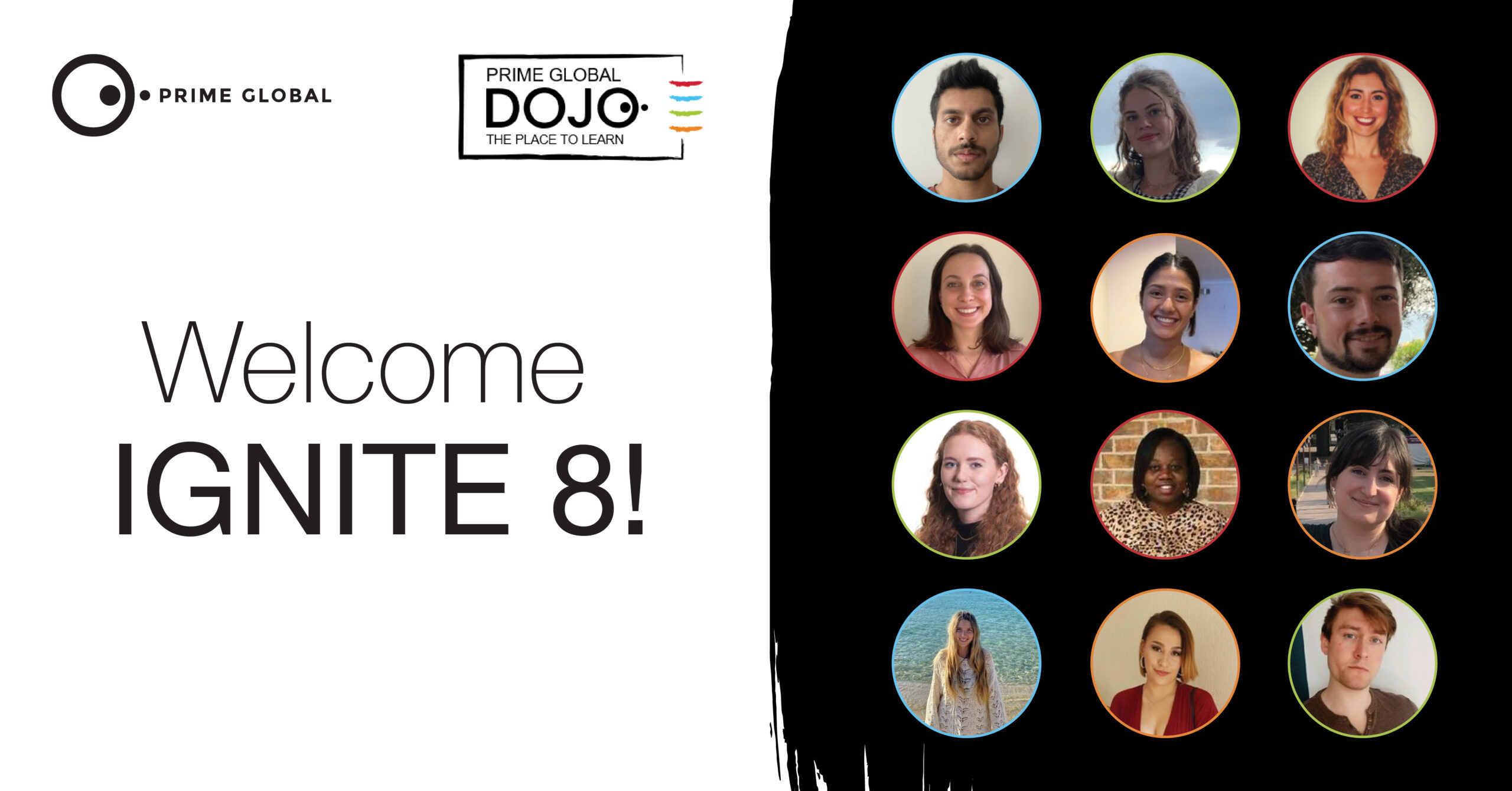For Pride Month 2022, Prime Patient investigate how Pharma can build stronger, more productive relationships with the LGBTQIA+ community
Introduction
When Pride Month rolls around each year, it’s common to see Pharma companies’ social media channels fill with Pride flags, messages of acceptance, and celebration of LGBTQIA+ employees. Some companies will even promote their awards won for fostering an inclusive working environment or company culture. It’s great to see these public demonstrations of support, but there are ways in which Pharma can be more queer-inclusive in their work with patients as well as their publicised messages of policy and company culture.
What are Pharma companies currently doing well regarding LGBTQIA+ initiatives? Let’s take Gilead as an example – as an HIV PrEP market leader, the company is ideally positioned to make a positive difference for LGBTQIA+ patients. By pledging 3.2 million USD to the Human Rights Campaign (hcr.org) (the largest LGBTQ+ civil rights organisation in the US), Gilead are boosting the educational and policy aspects of the campaign, focusing on communities disproportionately affected by HIV, younger individuals (i.e., those who do not have the real-world understanding of HIV derived from living through the AIDS epidemic), and transgender inclusion.
Financial support is a valuable tool for helping the LGBTQIA+ community, but there are more systemic ways to make a difference; ultimately, Pharma should be adapting existing structures and ways of working to address how pharmaceutical practice itself (e.g., clinical trial design) can be inclusive.
Patient perceptions of Pharma

Images from GSK’s 2020 Sensodyne campaign, which included queer representation
In a 2021 survey, nearly half of respondents felt pharmaceutical companies need to do more to engage with and understand members of the queer community, (1) a sentiment that was particularly prevalent among those who identified as lesbian, transgender, or non–binary. Reasons for this belief included the lack of queer couples represented in pharmaceutical marketing, with such couples typically only being regularly seen in advertisements for HIV treatments – an important, but single area of queer health. LGBTQIA+ people experience illnesses aside from HIV infection, and it is important that pharma companies demonstrate recognition of queer patients across all therapy areas in both marketing (see an example from GSK in 2020) and research and engagement activities. This will help to build trust with the LGBTQIA+ community. Queer representation in marketing is a relatively superficial shift, so it’s imperative this is accompanied by inclusive research and engagement if these patients are not just to be represented, but also have their health needs actively addressed.
Clinical trials
Language

To ensure fair access to innovative therapies, trial recruitment and design should be conducted with the needs of the LGBTQIA+ community in mind. Starting with recruitment, linguistic adaptations can go a long way in helping intersex, trans, or non-binary people feel included and accepted – especially for conditions associated with a particular sex. (2) For example, a trans man could be legally registered as male but live with ovarian cancer, a condition traditionally falling under the bracket of ‘women’s health’; therefore, if a recruitment advert for an ovarian cancer drug trial were to call for women only, such trans men would be less likely to feel able to take part, even if they were in dire need of innovative treatment. (Check out our article on trans health and Pharma to learn more)
A Twitter post from the World Ovarian Cancer Coalition exemplifies this well, asking for people who were “born with ovaries”, to get in touch, rather than simply asking for women, which would exclude other people with ovaries who do not identify as female.
Trial inclusion and exclusion criteria
Trial inclusion and exclusion criteria pose particularly significant opportunities for improved LGBTQIA+ inclusion in Pharma. Historically, people in same-sex relationships have been excluded from trials, as revealed in a Letter to the Editor published in the New England Journal of Medicine. (3) As this letter was written in 2010, we would hope that by now it is purely scientific reasoning that is restricting access to potential trial participants, as is sometimes required for certain clinical investigations. (4)
On a similar note, it is important inclusion of trans patients is clearly accommodated within trial protocols, including for those relating to treatments associated with a particular sex. Trial recruitment materials should be inclusive, with similar language to that of the aforementioned World Ovarian Cancer Coalition post. (Check out our article on trans health and Pharma to learn more)
How studies are run
Focusing again on transgender people, their inclusion in protocols is only the first step in improving access to trials; pharma companies should also ensure that paperwork across the entire clinical trial process (e.g., informed consent documents and trial data capture forms) is structured in an accommodating fashion. Currently used templates often fail to capture nuances such as gender vs sex and preferred name vs legal name, which are crucial distinctions for the trans community. Even answering the seemingly basic question of whether one is male or female can be complicated for trans patients; for example, for someone who was assigned male at birth but takes feminizing hormones, has had gender-affirming surgery, and is legally registered as female, categorising themselves as “male” or “female” with no further context is inadequate and inappropriate.
Study protocols and informed consent documents can also be tweaked to provide more relevant and inclusive guidance for how studies should be run. For instance, it is common for such materials to declare “all women of child-bearing potential must use contraception.” As expressed brilliantly by Lindsay McNair, Chief Medical Officer at WCG, and the members of the WCG ALIVE (Advocates for LGBTQIA+ Inclusion, Visibility and Empowerment) group, this statement assumes both that all females are in sexual relationships in which they may become pregnant, and that everyone who can become pregnant identifies as female. (2) Thus, not only do statements like this effectively ignore the existence of fertile queer women, trans men, and non-binary people assigned female at birth, but they also could exclude such people from trials as the enforced, unnecessary use of contraception could be a dealbreaker for participation. A better alternative would be “all people who could become pregnant during the course of the trial should use contraception once enrolled until trial completion”.
Protocols should also explicitly clarify how LGBTQIA+ patients should be catered for in trials – in particular, regarding the potential need for pregnancy tests. Some trans men or non-binary people assigned female at birth (AFAB) may be fertile (therefore eligible for pregnancy tests), while some these people, as well as fertile cisgender women, may not be in relationships where pregnancy is likely. For these reasons, it could be valuable to simply ask all participants whether they need pregnancy tests.
By making small tweaks such as these, necessary safety measures can be implemented in trials, while preserving affirmation of patients’ identities and thus reducing the likelihood of patients dropping out. (5) Similarly, as gender affirmation therapies can affect the definition of ‘normal’ parameters for certain values, in clinical trials, companies should a) facilitate clarification of patients’ gender distinctly from their sex and b) keep abreast of guidance regarding interpretation of biological / clinical data in trans people; this way, trans patients can be included in clinical studies with scientific confidence. (6) (7)
Welcoming environments
For any LGBTQIA+ patient entering an industry space, whether it be a pharmaceutical company’s headquarters or a clinical trial venue, it is important the environment is welcoming and actively encourages a sense of safety – especially given historical sensitivities surrounding the AIDS epidemic.
Visually, companies can ensure that patient-facing materials (such as trial explainers) and surroundings (e.g., posters, magazines, bathroom signage) reflect value invested in diversity, for example through information on what the company is doing to support queer communities, using inclusive language, and removing binary categorisation where not strictly necessary (e.g., including a gender-neutral bathroom option).
 At minimum, pharmaceutical companies should mandate cultural sensitivity training for all staff involved with interacting with patients to prevent avoidable slip-ups that could alienate queer patients. Companies should also actively strive to recruit diverse trial investigators and patient advocacy liaisons. If patients can relate on the level of their marginalized quality (i.e., queer identity) to the industry employees they encounter, they are significantly more likely to trust those individuals. (8) Trust is crucial for forming relationships in many ways, but for people in the queer community who are fully or partially ‘closeted’, trusting that their engagement with industry will not result in them being ‘outed’ could be a deciding factor in whether those patients take part in trials, ad boards etc. Clarification of why sexuality or gender/sex data may be collected would also help to reassure patients. Along the same vein, pharmaceutical companies should also take care to clearly reassure patients about confidentiality and data protection.
At minimum, pharmaceutical companies should mandate cultural sensitivity training for all staff involved with interacting with patients to prevent avoidable slip-ups that could alienate queer patients. Companies should also actively strive to recruit diverse trial investigators and patient advocacy liaisons. If patients can relate on the level of their marginalized quality (i.e., queer identity) to the industry employees they encounter, they are significantly more likely to trust those individuals. (8) Trust is crucial for forming relationships in many ways, but for people in the queer community who are fully or partially ‘closeted’, trusting that their engagement with industry will not result in them being ‘outed’ could be a deciding factor in whether those patients take part in trials, ad boards etc. Clarification of why sexuality or gender/sex data may be collected would also help to reassure patients. Along the same vein, pharmaceutical companies should also take care to clearly reassure patients about confidentiality and data protection.
Diverse engagement
As much as there is work to be done regarding the inclusion of LGBTQIA+ patients as passive trial participants, it’s never too early to learn from queer patients on how best to meet this community’s needs in healthcare research. The aforementioned World Ovarian Cancer Coalition advertisement again exemplifies good practice here, as it includes a request for patient experts from the queer community.
Pharmaceutical companies need to actively engage queer-focused advocacy groups or queer representatives from such groups for suggestions on trial design, research priorities, and other key pharmaceutical processes; unless these voices are actively sought, they are likely to be overshadowed by those of non-queer patients and caregivers, despite many patients and caregivers being part of the LGBTQIA+ community and having needs and experiences particular to those identities. Diversity in the types of patients involved in engagement initiatives is a key step in reducing health research inequalities, as not only can a range of lived experiences inform more targeted, appropriate research, but such collaborations can help to strengthen relationships between underserved patients and pharmaceutical companies. (9)
Conclusion
True patient centricity includes all types of patients. By integrating the above recommendations, Pharma can transcend corporate ‘representation’ campaigns and instead actively address queer health needs via meaningful LGBTQIA+ inclusion.
Recommended reading: What can Pharma to do combat trans health inequity?
For more information, get in touch with the Prime Patient team via PatientEngagement@primeglobalpeople.com
References
- Missakian N. Pharma outreach to LGBTQ community lacking, reveals untapped market beyond HIV and PrEP: survey [Internet]. Fierce Pharma. 2021 [cited 29 June 2022]. Available from: https://www.fiercepharma.com/marketing/pharma-outreach-to-lgbtq-lacking-survey-finds-leaving-untapped-potential-market-beyond
- WCG ALIVE, McNair L. Making Clinical Research Inclusive: Strategies to Include the LGBTQIA+ Community in Research Trials – WCG IRB [Internet]. WCG IRB. [cited 29 June 2022]. Available from: https://www.wcgirb.com/insights/making-clinical-research-inclusive-strategies-to-include-the-lgbtqia-community-in-research-trials/
- Egleston B, Dunbrack R, Hall M. Clinical Trials That Explicitly Exclude Gay and Lesbian Patients. New England Journal of Medicine. 2010;362(11):1054-1055.
- Lauren C. Are Gay People Excluded From Clinical Trials? [Internet]. ABC News. 2010 [cited 29 June 2022]. Available from: https://abcnews.go.com/Health/WellnessNews/gay-people-excluded-clinical-trials/story?id=10129927
- Price K, Alavi A, Hsiao J, Shi V. Gender minority patients in dermatology clinical trials. International Journal of Women’s Dermatology. 2020;6(5):438-439.
- What can Pharma do to help combat trans health inequity? [Internet]. Prime Global. 2022 [cited 29 June 2022]. Available from: https://primeglobalpeople.com/2022/06/17/what-can-pharma-do-to-help-combat-trans-health-inequity/
- Transgender Transition Testing [Internet]. Lab Tests Online. 2022 [cited 29 June 2022]. Available from: https://pathologytestsexplained.org.au/learning/index-of-conditions/transgender-transition-testing
- Asquith A, Sava L, Harris A, Radix A, Pardee D, Reisner S. Patient-centered practices for engaging transgender and gender diverse patients in clinical research studies. BMC Medical Research Methodology. 2021;21(1).
- Mannion-Krase G. Pride in Research: The legacy of erasure and the future of LGBT+ inclusive trials – Cancer Prevention Group Blog [Internet]. King’s Cancer Prevention Blog. 2022 [cited 29 June 2022]. Available from: https://blogs.kcl.ac.uk/cancerprevention/2022/02/28/pride-in-research-the-legacy-of-erasure-and-the-future-of-lgbt-inclusive-trials/




